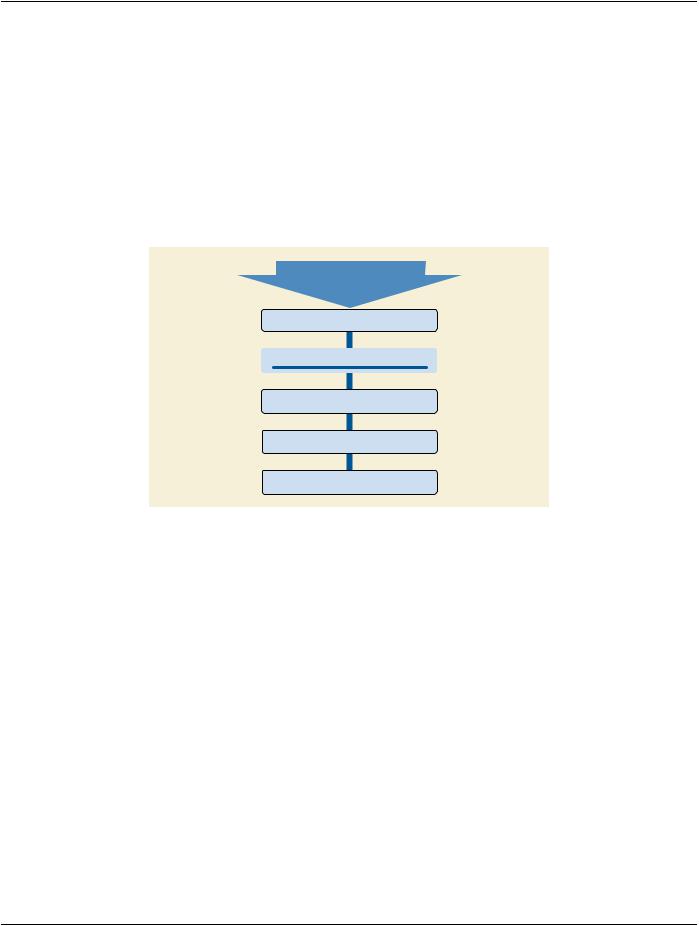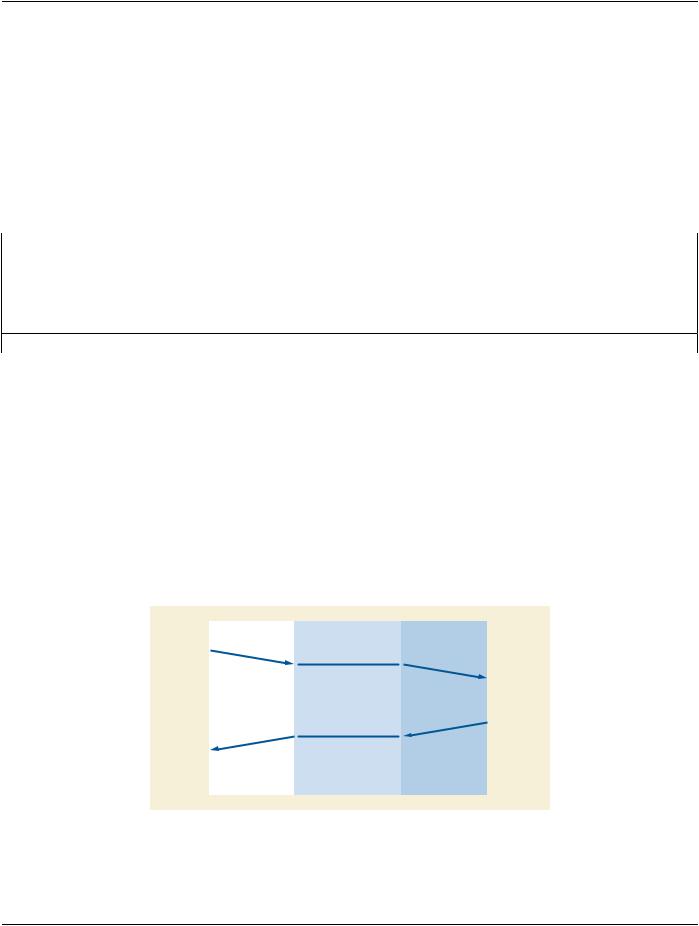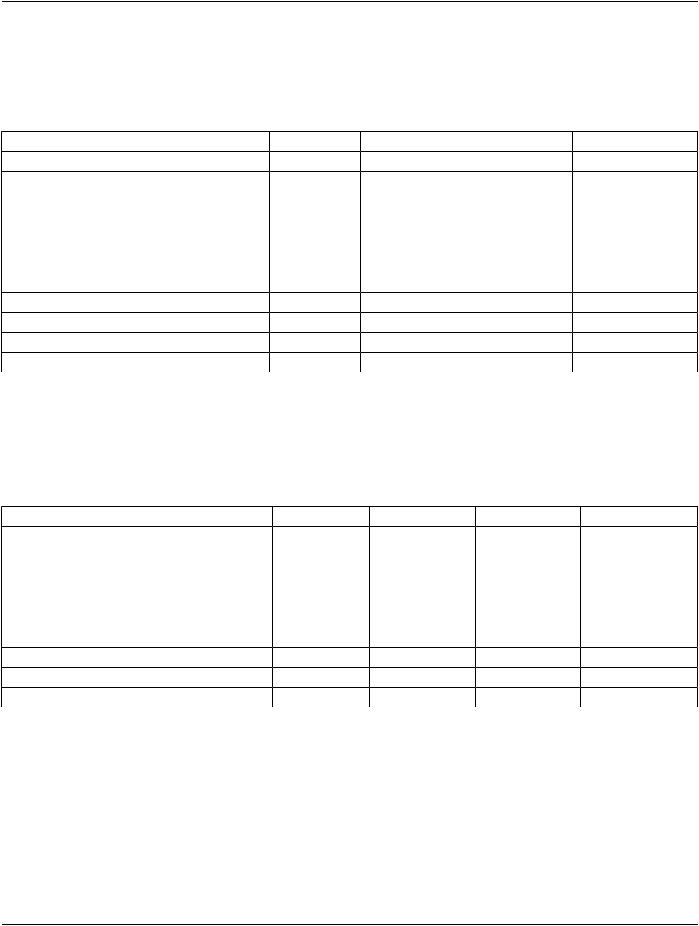
PS-2020a / part08
.pdf
DICOM PS3.8 2020a - Network Communication Support for Message Exchange |
Page 21 |
4 Symbols and Abbreviations
The following symbols and abbreviations are used in this Part of the Standard.
ACR |
American College of Radiology |
ACSE |
Association Control Service Element |
ASCII |
American Standard Code for Information Interchange |
AE |
Application Entity |
ANSI |
American National Standards Institute |
AP |
Application Process |
ASE |
Application Service Element |
ARTIM |
Association Request/Reject/Release Timer |
CEN TC251Comite Europeen de Normalisation-Technical Committee 251 - Medical Informatics
DICOM |
Digital Imaging and Communications in Medicine |
FDDI |
Fiber Distributed Data Interface |
HL7 |
Health Level 7 |
IEC |
International Electrotechnical Commission |
IEEE |
Institute of Electrical and Electronics Engineers |
ISDN |
Integrated Services Digital Network |
ISO |
International Organization for Standardization |
ISP |
International Standardized Profile |
JIRA |
Japan Medical Imaging and Radiological Systems Industries Association |
LAN |
Local Area Network |
NEMA |
National Electrical Manufacturers Association |
NIST |
National Institute of Standards and Technology |
OSI |
Open Systems Interconnection |
PDU |
Protocol Data Unit |
PDV |
Presentation Data Values |
SAP |
Service Access Point |
TCP/IP |
Transmission Control Program/Internet Protocol |
UID |
Unique Identifier |
UL |
Upper Layers |
WAN |
Wide Area Network |
- Standard -

Page 22 |
DICOM PS3.8 2020a - Network Communication Support for Message Exchange |
- Standard -

DICOM PS3.8 2020a - Network Communication Support for Message Exchange |
Page 23 |
5 Conventions
The following conventions are used for the service description tables shown in this Part of the Standard.
(=) The same parameter value used in the indication or confirmation shall be the same as used in the request or response respect-
ively.
C Conditional (on User Option)
M Mandatory usage
MF Mandatory with a fixed value
NU Not Used
P Provider Initiated
U User Option
UF User Option with a fixed value
Blank entries are not applicable.
- Standard -

Page 24 |
DICOM PS3.8 2020a - Network Communication Support for Message Exchange |
- Standard -

DICOM PS3.8 2020a - Network Communication Support for Message Exchange |
Page 25 |
6 Network Communication Support
Environment
The Network Communication Services specified in PS3.8 are a set of generic services provided to support the communication of DICOM Application Entities. They are a proper subset of the services offered by the OSI Presentation Service (ISO 8822) and of the OSI Association Control Service Element (ACSE) (ISO 8649). They shall be referred to as the Upper Layer Service or UL Service. The DICOM UL Service is specified in Section 7.
This UL Service is provided by the Upper Layer Protocol for TCP/IP (see Section 9).
Figure 6-1 shows the TCP/IP protocol stack that is available to support the communication of DICOM Application Entities.
Medical Imaging
Application
DICOM Application Message Exhange
BOUNDARY: DICOM Upper Layer Service
DICOM Upper Layer Protocol for TCP/IP
TCP/IP Transport Layer
Network
Figure 6-1. DICOM Network Protocol Architecture
- Standard -

Page 26 |
DICOM PS3.8 2020a - Network Communication Support for Message Exchange |
- Standard -

DICOM PS3.8 2020a - Network Communication Support for Message Exchange |
Page 27 |
7 OSI Upper Layer Service for DICOM Application Entities
This section provides a description of how to use the OSI Association Control Service Element (ACSE) and OSI Presentation Layer to provide the Upper Layer Service necessary to support the communication of DICOM Application Entities. This Upper Layer Service is a fully conformant subset of the services offered by the ACSE and the OSI Presentation Layer.
The UL Services are listed in Table 7-1.
|
Table 7-1. Upper Layer Services |
SERVICE |
TYPE |
A-ASSOCIATE |
Confirmed |
A-RELEASE |
Confirmed |
A-ABORT |
Non-Confirmed |
A-P-ABORT |
Provider-initiated |
P-DATA |
Non-Confirmed |
In addition to the Upper Layer Service specification, this section defines at the parameter level the use of each element of this Upper LayerServicebyDICOMApplicationEntities.TherulesguidingtheuseofthisUpperLayerServicebytheDICOMApplicationEntities are addressed in PS3.7.
7.1 A-ASSOCIATE Service
TheestablishmentofanassociationbetweentwoAEsshallbeperformedthroughACSEA-ASSOCIATErequest,indication,response and confirmation primitives. The initiator of the service is hereafter called a requestor and the service-user that receives the A-ASSO- CIATE indication is hereafter called the acceptor. It shall be a confirmed service.
Note
The A-ASSOCIATE service supports the equivalent of a channel establishment in a point-to-point interface (see the retired PS3.9).
Figure 7-1 illustrates the association establishment between two AEs.
Requestor |
|
DICOM UL |
|
Acceptor |
A-ASSOCIATE |
|
Service Provider |
|
|
request |
|
|
|
|
|
|
|
|
|
|
|
|
|
A-ASSOCIATE |
|
|
|
|
indication |
|
|
|
|
A-ASSOCIATE |
|
|
|
|
response |
A-ASSOCIATE |
|
|
|
|
confirmation |
|
|
|
|
|
|
|
|
|
( SAP ) |
|
( SAP ) |
||
Figure 7-1. Associate Request
- Standard -

Page 28 |
DICOM PS3.8 2020a - Network Communication Support for Message Exchange |
7.1.1 A-ASSOCIATE Parameters
Table 7-2 lists the parameters that shall be required for the A-ASSOCIATE service used by DICOM Application Entities in this Standard.
Table 7-2. Key A-ASSOCIATE Service Parameters
A-ASSOCIATE parameter name |
Request |
Indication |
Response |
Confirmation |
application context name |
M |
M(=) |
M |
M(=) |
calling AE title |
M |
M(=) |
M |
M(=) |
called AE title |
M |
M(=) |
M |
M(=) |
user information |
M |
M(=) |
M |
M(=) |
result |
|
|
M |
M(=) |
result source |
|
|
|
M |
diagnostic |
|
|
U |
C(=) |
calling presentation address |
M |
M(=) |
|
|
called presentation address |
M |
M(=) |
|
|
presentation context definition list |
M |
M(=) |
|
|
presentation context definition list result |
|
|
M |
M(=) |
Note |
|
|
|
|
See Section 5 of this Part for table conventions.
Table7-3liststheparametersfortheA-ASSOCIATEservicethatshallcontainfixedvaluesorshallnotbeusedbyDICOMApplication Entities in this Standard.
Table 7-3. A-ASSOCIATE Service Parameter (Fixed or Not Used)
A-ASSOCIATE parameter name |
Request |
Indication |
Response |
Confirmation |
mode |
UF |
MF(=) |
|
|
responding AE title |
|
|
MF |
MF(=) |
calling/called/responding AE qualifier |
NU |
NU |
NU |
NU |
calling/called/responding AP invoc-id |
NU |
NU |
NU |
NU |
calling/called/responding AE invoc-id |
NU |
NU |
NU |
NU |
responding presentation address |
|
|
MF |
MF(=) |
default context name/result |
NU |
NU |
NU |
NU |
presentation & session requirements |
UF |
UF(=) |
UF |
UF(=) |
other parameters (see ISO 8822 & 8649) |
NU |
NU |
NU |
NU |
7.1.1.1 Mode (Fixed)
This parameter allows the negotiation of the optional Mode OSI-ACSE Service parameter. Only the default value of "normal" is used by DICOM Application Entities. Therefore, this parameter shall always specify the value "normal."
7.1.1.2 Application Context Name
This parameter identifies the application context proposed by the requestor. The acceptor shall return either the same or a different name. The returned name shall specify the application context to be used for this association. Further discussion on Application Context Names can be found in Annex A.
- Standard -

DICOM PS3.8 2020a - Network Communication Support for Message Exchange |
Page 29 |
Anapplicationcontextisanexplicitlydefinedsetofapplicationserviceelements,relatedoptions,andanyotherinformationnecessary for the interworking of application entities on an association.
Note
The offer of an alternate application context by the acceptor provides a mechanism for limited negotiation. If the requestor cannot operate in the acceptor's application context, it shall issue an A-Abort request primitive. Application Context Names for the DICOM Application Entity as well as Application Context Names usage rules are defined in PS3.7.
7.1.1.3 Calling AE Title
This parameter identifies the Application Entity (AE) that shall contain the requestor of the A-ASSOCIATE service. It is based on the Source DICOM Application Name. The relationship between DICOM Application Names and AE titles is specified in Annex C. The Calling AE title may or may not be the same as the Initiator Address present in DICOM Messages exchanged over the association.
Note
It is the responsibility of the UL User that received the A-ASSOCIATE-RQ to verify whether the Calling AE Title is one of its known remote DICOM Application Names.
7.1.1.4 Called AE Title
This parameter identifies the Application Entity that shall contain the intended acceptor of the A-ASSOCIATE service. It is based on the Destination DICOM Application Name. The relationship between DICOM Application Name and AE titles is specified in Annex C. TheCalledAEtitlemayormaynotbethesameastheReceiverAddresspresentinDICOMMessagesexchangedovertheassociation.
Note
It is the responsibility of the UL User that received the A-ASSOCIATE-RQ to verify whether the Called AE Title is its (or one of its) DICOM Application Name(s).
7.1.1.5 Responding AE Title (Fixed)
This parameter identifies the AE that shall contain the actual acceptor of the A-ASSOCIATE service. In this Standard it shall always contain the same value as the Called AE Title of the A-ASSOCIATE indication.
7.1.1.6 User Information
ThisparametershallbeusedbytherequestorandtheacceptoroftheassociationtoincludeDICOMApplicationEntityuserinformation.
Its meaning shall depend on the application context that accompanies the primitive. The usage of this parameter is specified in Annex
D.
Note
1.This parameter is used to carry initialization information for the DICOM Application Entities as defined in the application context specified by the value of the accompanying Application Context Name parameter.
2.Annex D specifies some user information sub-items, and references PS3.7 for the specification of additional sub-items. PS3.7, in turn, references PS3.4 for the specification of Service-class-application-information used in some sub-items.
7.1.1.7 Result
This parameter shall be provided either by the acceptor of the A-ASSOCIATE request, by the UL service-provider (ACSE related function), or by the UL service-provider (Presentation related function). It shall indicate the result of using the A-ASSOCIATE service. It shall take one of the following symbolic values:
a.accepted;
b.rejected (permanent);
c.rejected (transient).
- Standard -

Page 30 |
DICOM PS3.8 2020a - Network Communication Support for Message Exchange |
Note
Therejected(permanent)impliesthattheassociationcallingULuser(whenreturningsucharesulttoanassociationrequest) does not need to "call later." A permanent situation exists that prevents the association establishment (e.g., remote DICOM Application Name unknown).
7.1.1.8 Result Source
The value of the parameter is supplied by the UL service-provider. It identifies the creating source of the Result parameter and the Diagnostic parameter, if present. It shall take one of the following symbolic values:
a.UL service-user;
b.UL service-provider (ACSE related function);c) UL service-provider (Presentation related function).
Note
If the Result parameter has the value "accepted," the value of this parameter is "UL service-user."
7.1.1.9 Diagnostic
This parameter shall only be used if the Result parameter has the value of "rejected (permanent) " or "rejected (transient)." It shall be used to provide diagnostic information about the result of the A-ASSOCIATE service.
If the Result Source parameter has the value "UL service-user," it shall take one of the following symbolic values:
a.no-reason-given
b.application-context-name not supported
c.calling-AE-title not recognized
d.called-AE-title not recognized
e.calling-AE-qualifier not recognized (see note)
f. calling-AP-invocation-identifier not recognized (see note)
g.calling-AE-invocation-identifier not recognized (see note)
h.called-AE-qualifier not recognized (see note)
i. called-AP-invocation-identifier not recognized (see note)
j. called-AE-invocation-identifier not recognized (see note)
If the Result Source parameter has the value "UL service-provider" (ACSE related function), it shall take one of the following symbolic values:
a.no-reason-given
b.no-common-UL version
If the result source has the value "UL service-provider" (Presentation related function), it shall take the following symbolic values:
a.no-reason-given
b.temporary-congestion
c.local-limit-exceeded
d.called-(Presentation) -address-unknown
- Standard -
